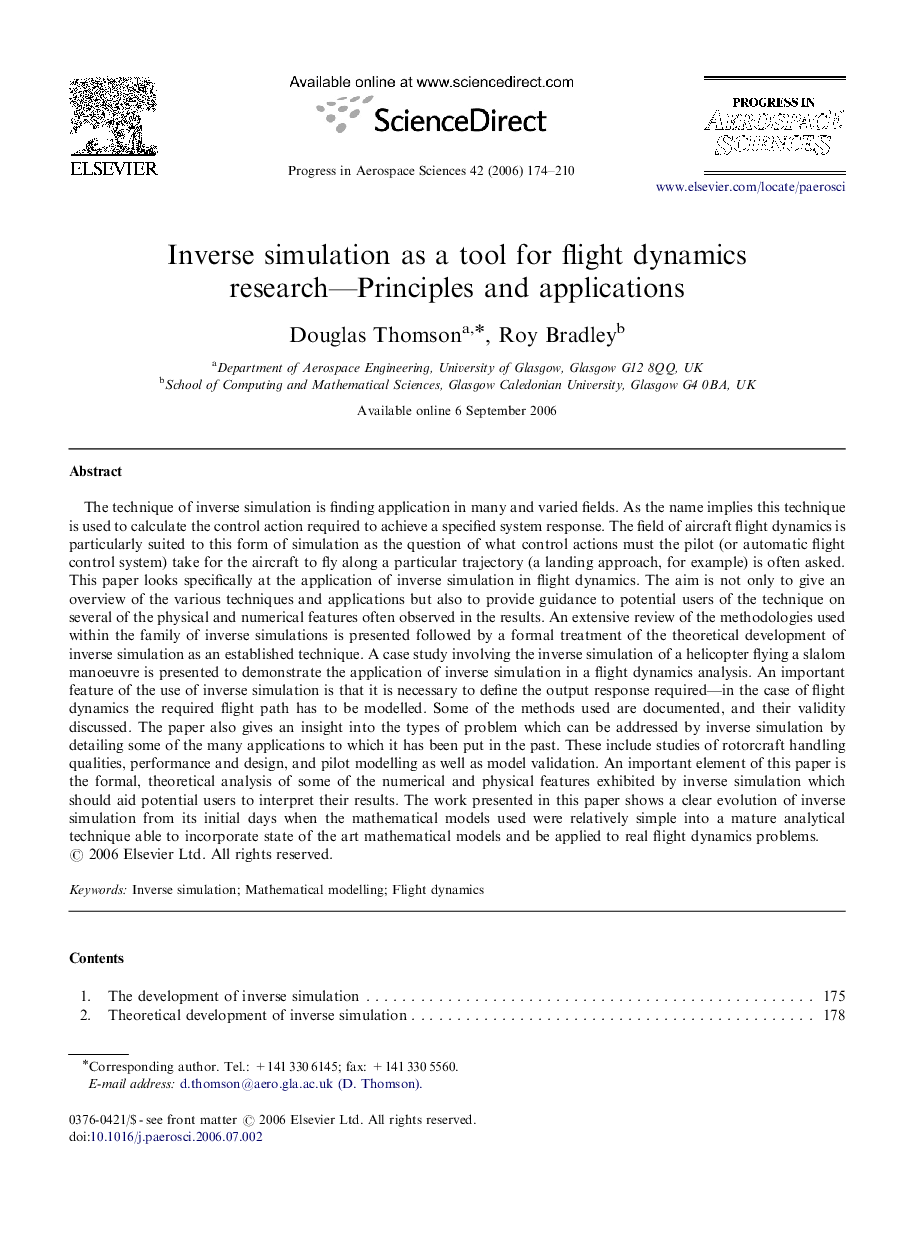| کد مقاله | کد نشریه | سال انتشار | مقاله انگلیسی | نسخه تمام متن |
|---|---|---|---|---|
| 1719559 | 1014057 | 2006 | 37 صفحه PDF | دانلود رایگان |

The technique of inverse simulation is finding application in many and varied fields. As the name implies this technique is used to calculate the control action required to achieve a specified system response. The field of aircraft flight dynamics is particularly suited to this form of simulation as the question of what control actions must the pilot (or automatic flight control system) take for the aircraft to fly along a particular trajectory (a landing approach, for example) is often asked. This paper looks specifically at the application of inverse simulation in flight dynamics. The aim is not only to give an overview of the various techniques and applications but also to provide guidance to potential users of the technique on several of the physical and numerical features often observed in the results. An extensive review of the methodologies used within the family of inverse simulations is presented followed by a formal treatment of the theoretical development of inverse simulation as an established technique. A case study involving the inverse simulation of a helicopter flying a slalom manoeuvre is presented to demonstrate the application of inverse simulation in a flight dynamics analysis. An important feature of the use of inverse simulation is that it is necessary to define the output response required—in the case of flight dynamics the required flight path has to be modelled. Some of the methods used are documented, and their validity discussed. The paper also gives an insight into the types of problem which can be addressed by inverse simulation by detailing some of the many applications to which it has been put in the past. These include studies of rotorcraft handling qualities, performance and design, and pilot modelling as well as model validation. An important element of this paper is the formal, theoretical analysis of some of the numerical and physical features exhibited by inverse simulation which should aid potential users to interpret their results. The work presented in this paper shows a clear evolution of inverse simulation from its initial days when the mathematical models used were relatively simple into a mature analytical technique able to incorporate state of the art mathematical models and be applied to real flight dynamics problems.
Journal: Progress in Aerospace Sciences - Volume 42, Issue 3, May 2006, Pages 174–210